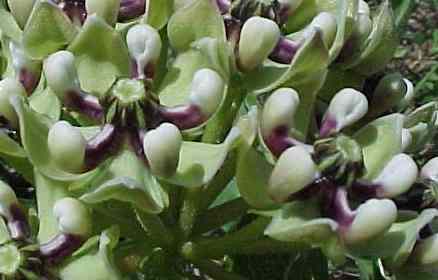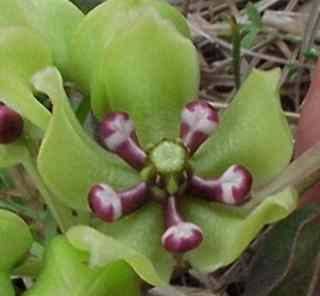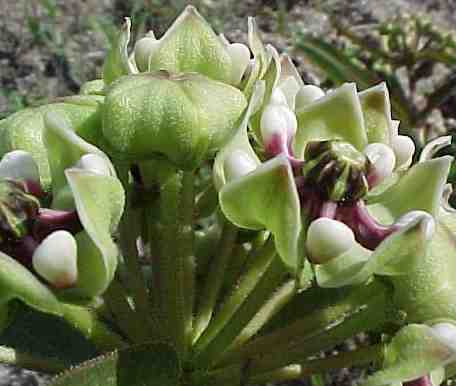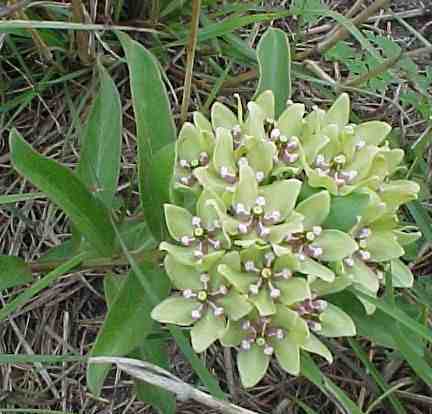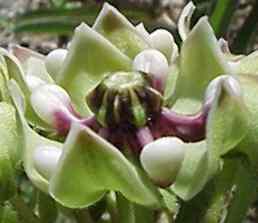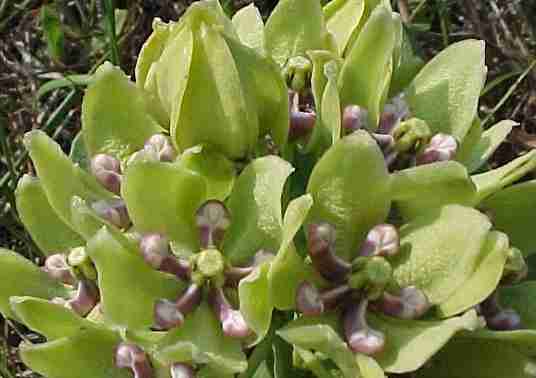We have found asperula in south central Texas (northwestern Victoria County) and then
northwestward to northern Runnels County (south of Abilene, Texas). Ranges of asperula and
viridis overlap in some inland areas. Asperula has long, thin lance-like leaves, with minute hairs
visible on stems and leaves. Always compare flowers of low, sprawling roadside milkweeds to
those of viridis below. Each flower (at ends of stems) of asperula has five pale green petals that
cup upward over the hoods and central column ... but barely extend above the five bulbous hoods
(white in these photos at the end of purple "stems"). The petals are only slightly taller than the central
column or "button" (in contrast to viridis where the petals extend to about twice the height of the
central column). We have found asperula in roadside ditches in many counties from Victoria to San
Antonio and then again along I-10 northwest of San Antonio and north of I-10 along US83 to near
Abilene. Several blooming stems (we have seen up to twenty) can be found growing from a central
tuber or root stalk. Seed pods of asperula and viridis are very similiar. When the seed pods are ripe,
there will appear to be a herd of antelopes resting out among the grasses, weeds, and wildflowers.
We have found viridis in roadsides and pastures in coastal counties, along US 59 southeastward to the
bays, then very sparingly inland to the northwest as far as Runnels County. In many cases, leaves of the
viridis appear more oval than those of the asperula, but without the minute hairs of the asperula.
Compare flowers to those of the asperula above. Viridis has five pale green petals cupping upward
at least twice as high as the hoods and central column. Although a pale green, the umbel cluster of
flowers, about the size of a baseball, will appear from a distance to be a white hemisphere against the
background of dark green of the leaves. One to three blooming stems are usually found, blooms at the
ends of stems.. We find asperula and viridis in roadside ditches, pastures, and hay meadows ... areas
that are mowed or grazed closely ... starting in late February and early March, depending on cold spells
and rainfall. Asperula and viridis usually have a good amount of growth awaiting the northbound
monarchs in March and April ... viridis near the Texas coast and asperula in south central Texas.
